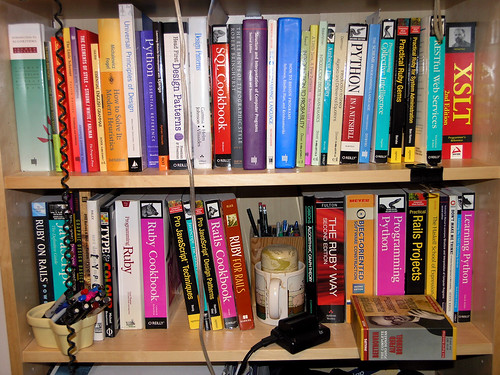Snapshot of right now
Oct. 8, 2009 – 12:32am
Right now I’m…
Sitting on my bed reading the Fannie Farmer Cookbook (my favorite) on how to bake a 9.25lb ham. Page 201. Remembering how I tell everyone they can’t take it into the kitchen, because I don’t want it getting dirty.
Thinking about how I need a roasting pan, which I should have grabbed when I was in Laurel, picking up my new camera lens from UPS. Thinking about how I waited 45 minutes for it, when I probably should have had it re-delivered. Also thinking that the roasting pan may be too large for my oven here.
Listening to George Crumb’s Ancient Voices of Children. Wishing it drowned out more of “The Shield,” the program my roommates are watching/listening to. Thinking how much I like Ancient Voices of Children, despite how weird some of the sounds are.
Finished taking a few play photos with the new lens. Posted them to flickr. Wondering if every good lens makes it this easy, which should I purchase next? Thinking I made a good choice to start.
Wondering if I will have any clean sock pairs left for me to wear to work tomorrow.
Resisting falling asleep, so I can formally get ready for sleep instead.



